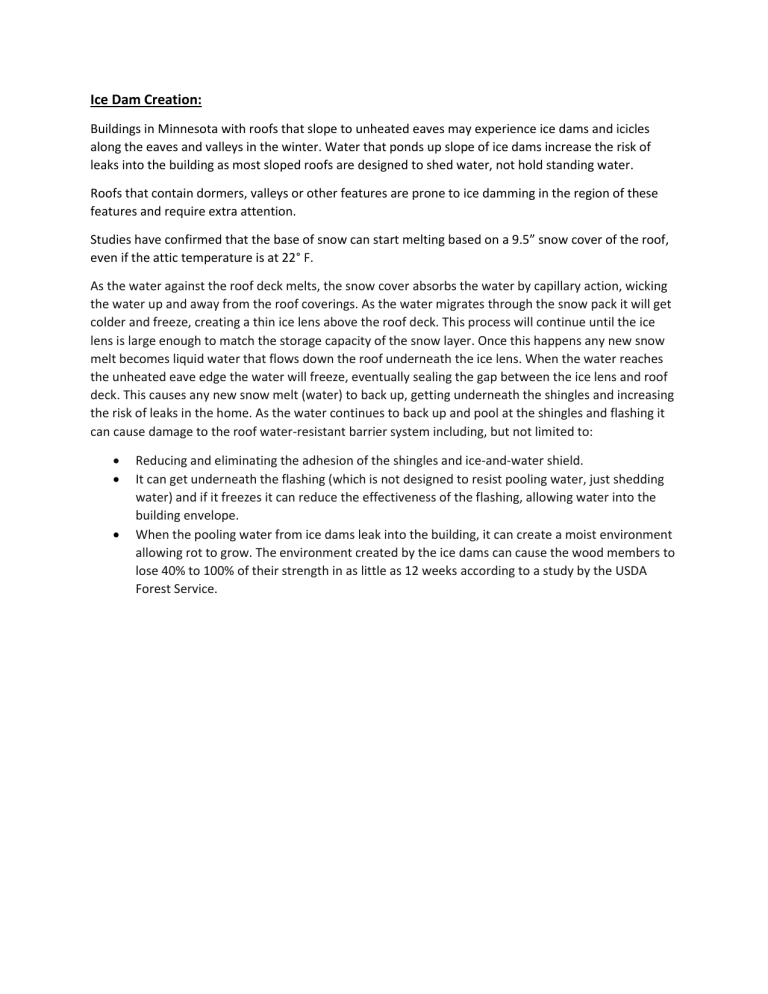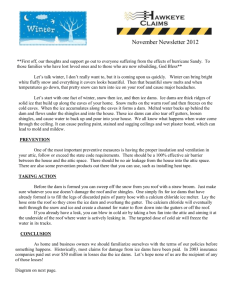
Ice Dam Creation: Buildings in Minnesota with roofs that slope to unheated eaves may experience ice dams and icicles along the eaves and valleys in the winter. Water that ponds up slope of ice dams increase the risk of leaks into the building as most sloped roofs are designed to shed water, not hold standing water. Roofs that contain dormers, valleys or other features are prone to ice damming in the region of these features and require extra attention. Studies have confirmed that the base of snow can start melting based on a 9.5” snow cover of the roof, even if the attic temperature is at 22° F. As the water against the roof deck melts, the snow cover absorbs the water by capillary action, wicking the water up and away from the roof coverings. As the water migrates through the snow pack it will get colder and freeze, creating a thin ice lens above the roof deck. This process will continue until the ice lens is large enough to match the storage capacity of the snow layer. Once this happens any new snow melt becomes liquid water that flows down the roof underneath the ice lens. When the water reaches the unheated eave edge the water will freeze, eventually sealing the gap between the ice lens and roof deck. This causes any new snow melt (water) to back up, getting underneath the shingles and increasing the risk of leaks in the home. As the water continues to back up and pool at the shingles and flashing it can cause damage to the roof water-resistant barrier system including, but not limited to: Reducing and eliminating the adhesion of the shingles and ice-and-water shield. It can get underneath the flashing (which is not designed to resist pooling water, just shedding water) and if it freezes it can reduce the effectiveness of the flashing, allowing water into the building envelope. When the pooling water from ice dams leak into the building, it can create a moist environment allowing rot to grow. The environment created by the ice dams can cause the wood members to lose 40% to 100% of their strength in as little as 12 weeks according to a study by the USDA Forest Service.


